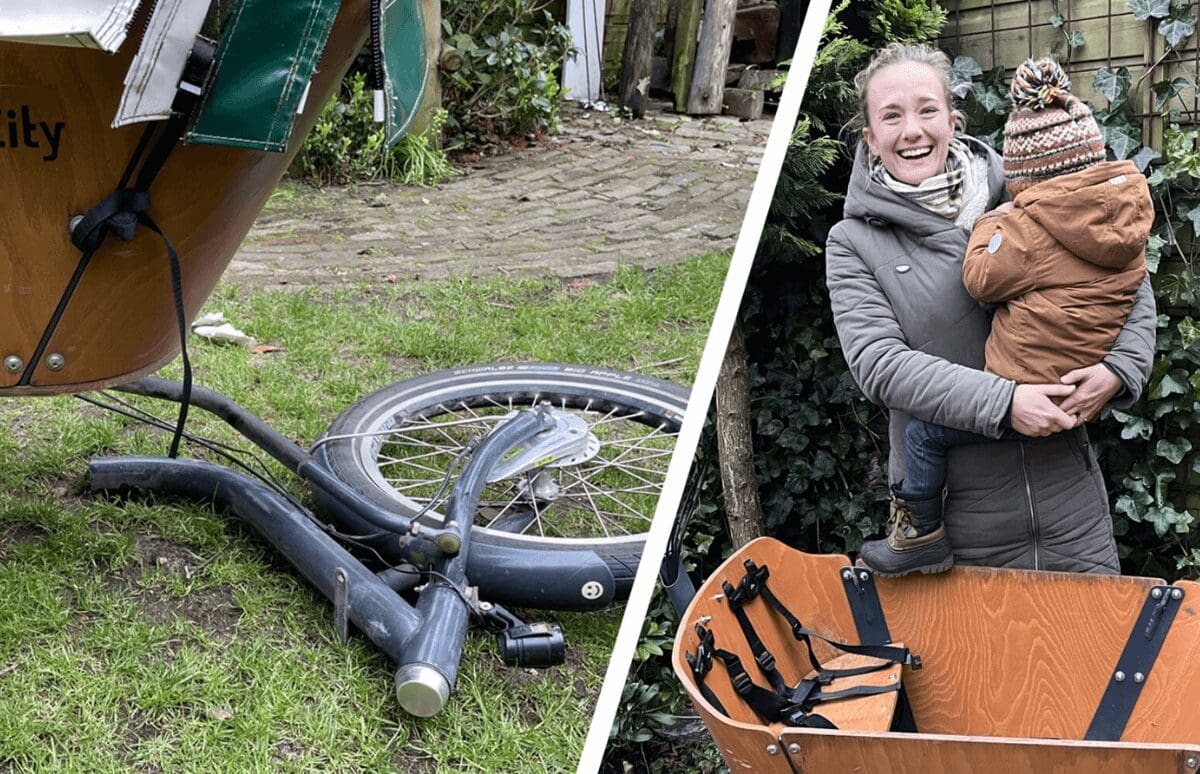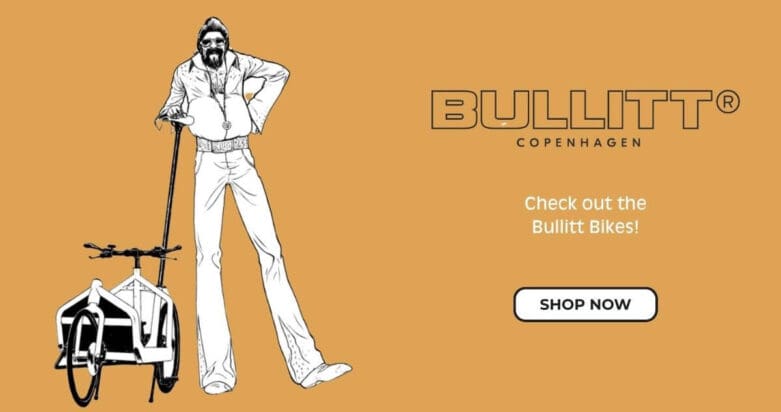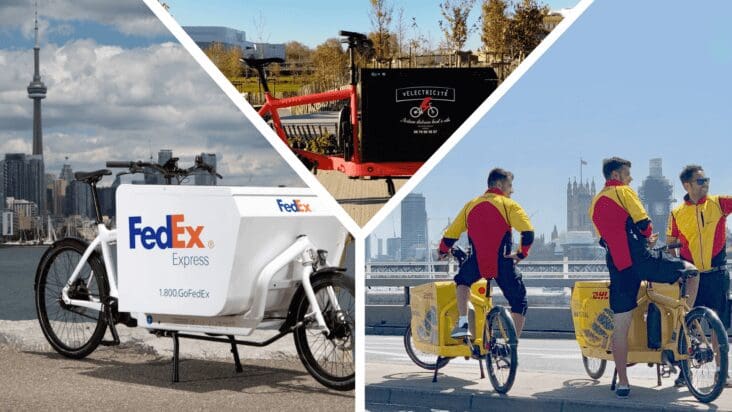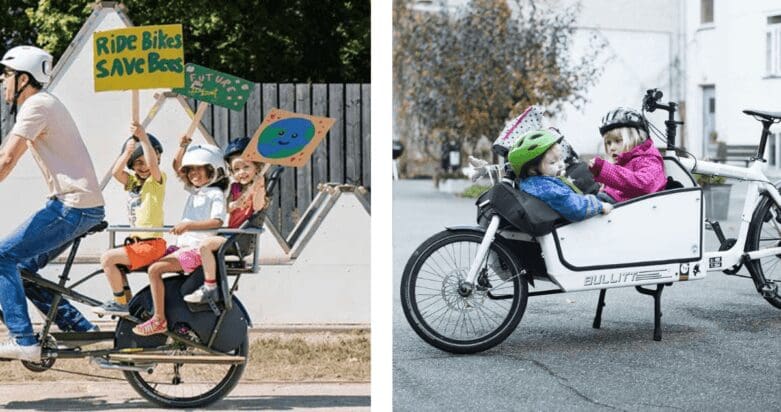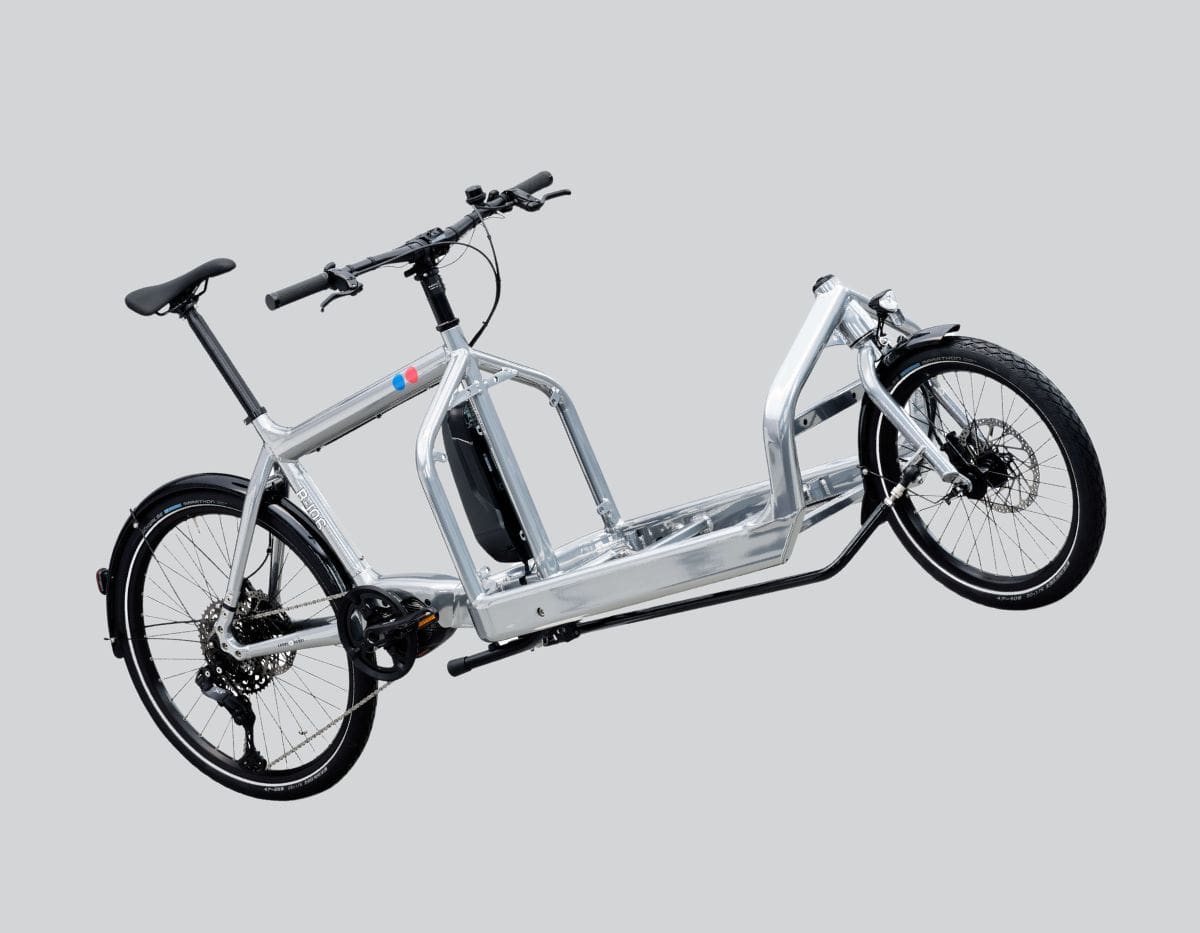On February 14th, 2024 the Netherlands Broadcasting Foundation announced that the Dutch Food and Consumer Product Safety Authority (NVWA) had banned all sales of Babboe Cargo Bikes and issued a recall on all Babboe bikes in Canada and the USA. Just five days earlier, RTL news reported that “Babboe cargo bikes break regularly: ‘klabang, in half.'” Sources within the Babboe company reported that they “…have often seen emails from customers stating that there has been an accident. Meanwhile, whistleblowers inside Babboe have been fired and the Dutch government has threatened criminal negligence in a lawsuit. Nearly all models of Babboe bikes have been recalled across Canada and you can check yours here on the Government of Canada website. In response, Babboe has offered a full refund on each bike. If you have a Babboe, stop riding it immediately and register for your refund here.
The Search for a Replacement
Searching for a replacement cargo bike is something we understand. If you bought your Babboe before 2010, chances are good that Babboe was the only option available. This is because Babboe was the first company to mass-produce and globally expand the Dutch cargo bike. Many companies soon followed, and all seemed to follow – in one way or another – the original Dutch design. But, the original cargo bike didn’t begin with the Dutch. It began in Denmark. And, this original Danish design, represented best by Copenhagen’s Bullitt Bikes, remains lighter, stronger, safer and far more modular than any competing cargo bike today.
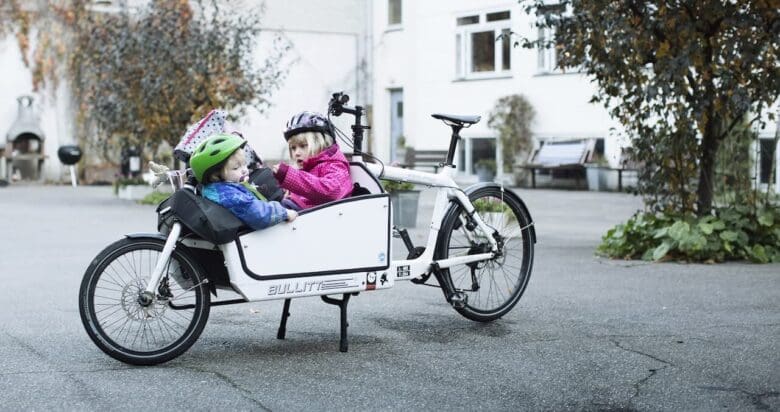
We’ve worked with Bullitt to offer Babboe owners a “silver bullet” to this recall (or a red Bullitt, a blue Bullitt, there are many colours!). For a limited time only, we are offering the Bullitt E6100 with a low maintenance XT system priced at $7500, usually $10,000. These bikes will deliver to Toronto in intervals between April and May 2025; just in time for your Babboe paycheque.
There’s a whole lot of reasons why a Bullitt is the best cargo bike. First of all, if you had a non-electric Babboe, the Bullitt starts at a mere 45lb to the Babboe’s 134lb. Your thighs will thank you! And, if you had an electric Babboe, the Bullitt starts at a pithy 55lb compared to the Babboe’s 150lb. Your motor and battery will thank you! Plus, a Bullitt is a better bike. You can achieve the same Babboe-upright position, or, if you prefer, adjust it a bit lower. And, a Bullitt won’t break. Whether you use the bike for family or delivery, the quality is commercial grade. Want to learn more? Keep reading. We promise that it will be enlightening!
Correcting the Drift
As we trace in this post, the two-wheeled cargo bike originated as a Danish invention and was originally used for freight, not children. This was before the 1990’s, when Copenhagen was still very car-centric and known for its sprawl and wide thoroughfares. As the story goes, it was only when Maarten VanAndel – a Dutchman – visited Copenhagen that he first saw the two-wheeled cargo bike and realized it could make a terrific kid carrier within Holland’s vast bicycle infrastructure. The VanAndel bike turned out to be a brilliant success. But, VanAndel’s company (known to many as Bakfiets.nl) was never designed to globally produce bikes at scale; it was only designed to serve a small country like the Netherlands. This is where Babboe entered the picture.
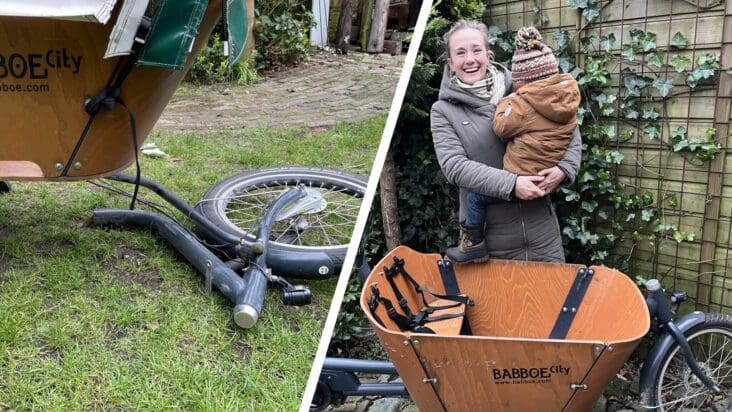
Babboe’s great brilliance was to flat-pack the cargo bike. Indeed, many companies who later advanced Babboe by offering lighter, more technological bikes, followed Babboe’s flat-packing model. There would be no Urban Arrow or Riese and Muller if Babboe’s flat-packing didn’t provide proof for global expansion. But, from what we can tell, the current recall appears tied to this very issue of flat-packing. Nearly all the Babboe cracks appear to be developing where the front frame and rear frame (they are boxed separately) connect. This is not to suggest that flat-packing is a bad idea. Others, like Riese and Muller and Urban Arrow seem to have achieved a high level of safety. According to the current CEO of Babboe, the problem is that the budget-friendly Babboe bikes were positioned at a price level “…where you can’t produce a safe and high-quality bike.”
Stronger
We like to say that Bullitt “corrects the drift” in the cargo bike market, and it does. First of all, it should be noted that Bullitt frames do not split apart. They are one-welded unit. This design is always far stronger than splitting a frame in two and bolting it together. This commitment to strength lies in the origin-story of the Danish two-wheeler. After all, these bikes were originally designed for freight, not kids – and this commercial use demanded an extremely tough design that also remained light. Now, you don’t need to use a Bullitt for commercial use, but it can be appreciated that there remains a vast quality difference between consumer grade and commercial grade. Bullitts are commercial grade. The proof is seen with FedEx, who employ a growing fleet of 100 Bullitt cargo bikes across Canada. Despite being half the weight, they are also twice as strong.
Now, one of the reasons a Bullitt is stronger is that they choose not to use a step-through frame. Recall that the triangle is the strongest shape. A diamond frame triangulates all the frame’s intersections and makes them stronger. We cannot deny that we love step-through bikes but it remains the case that step-through bikes are incredibly flexy; especially as cargo bikes. In fact, the Babboe frame recall is partly a result of the flex and stresses put on its step-through design. This, for instance, is why bikes like Urban Arrow use tree-trunk-sized tubes for their step-through frames. But, in doing so they also increase the weight. And, that’s a real problem.
Lighter
As the Danish bike moved to Holland and morphed into a kids-carrier, it also became heavier. Substantially heavier. We’ve travelled extensively to Holland, Germany and Denmark and still have no idea why the Dutch ride such heavy bikes. Perhaps it is the flat terrain. It could also be the remarkable urban density and short commutes. Or, maybe it is related to a necessary conviction that things must be overbuilt. Recall that the Dutch live below sea level and need to overbuild (especially their water-defying levees!). Does a design insularity result from this underwater thinking? We can’t be sure. But, when you compare a non-electric VanAndel or Babboe Bakfiets at 65kg (143lb) to a Bullitt bike at just 22kg (49lb) a Bullitt is almost three times lighter!! And, stronger too. To us, that doesn’t hold water.
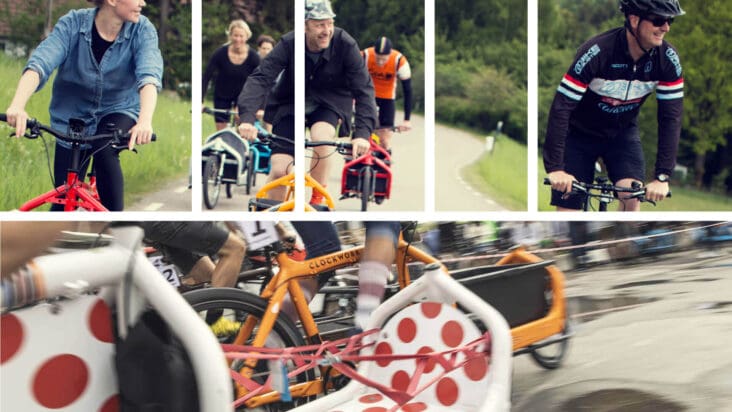
The problem is that nearly every cargo bike that followed the VanAndel followed the Dutch design, not the Danish. A Dutch Urban Arrow comes in at 51kg (112lb) while an electric Bullitt comes in at 28kg (61lb). A Bullitt is more than twice as light!! Yet, the cargo bike market tended to pick up where Urban Arrow left off rather than where Bullitt began. As the market moved to Germany, companies like Riese and Muller produced comparably heavy cargo bikes like Transporter (110lb) and the Packster (95lb). And, as the market moved to the USA, American brands like Trek got into the game, producing the Fetch-4, which weighs in at an inexplicable 165lb!! You can see Bullitt raising their eyebrows at this. As long as everyone follows the Dutch, the Danish still lead.
Bullitt versus longtails
The one exception to all these heavy Dutch bikes is a new invention called the longtail. An American invention, the longtail was first conceived at Stanford University by Ross Evans while doing volunteer work in Nicaragua. This design context is important, because Nicaragua has 144 cars per 1000 people. the lowest in the Americas. Unlike the European cargo bike, which were designed to offer safety in an ecosystem where car ownership is very high (car ownership in Holland is the highest in Europe per square foot), the longtail was designed to compete where people can’t afford cars. This shows up in the design. A European front-loading cargo bike features an impact-resistant box that acts as a “crumple-zone.” This protects your kids in case of an car accident. In the USA there are 908 cars per 1000 people. Impact resistance is everything.
But, to be fair, longtails are light. And, because of this, longtails handle nicely. And, that’s something most front-loaders don’t do, except Bullitt. The heavier the bike, the worse the handling. And, if impact-resistance is primary for safety, good proactive and reactive handling comes in at a very close second. But, to many buyers, these feel like they’re in tension. Many people looking at cargo bikes feel faced with a choice between heavy front-loaders or lightweight longtails. Longtails feel safer because of the handling. But, then you worry about impact resistance! Front loaders feel safer because of the impact resistance. But, then you worry about the heavy handling! If safety is your principal adjective when buying a cargo bike – and we believe it should be! – only a Bullitt offers safe lightweight handling with safe impact resistance.
Modular
The single greatest thing about the Bullitt is it’s sheer modularity. This can mean many things, but primarily it means the bike functions pre-kids, with-kids, and post-kids. Most people buy a cargo bike because they have kids and then sell it post-kids because its overall utility has expired. Not so with Bullitt. A Bullitt bike comes with an empty flatbed that you can plug-and-play a multitude of kid-carrying, commercial freight, or grocery-carrying options into. Heck, a Bullitt is so light that it’s just fun without any stuff on it. It’s so good that it can replace your regular bike.
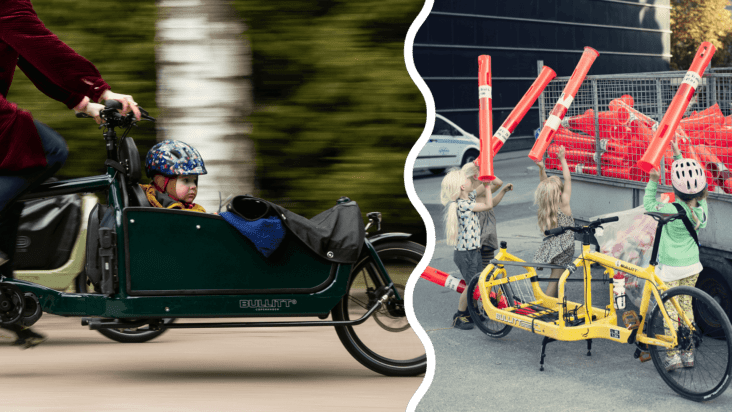
But, another way a Bullitt is modular is its sizing capability. In this way, a Bullitt is very much like a Brompton. A Brompton employs one frame yet three different handlebar options. Try each handlebar and you’ll never believe you’re riding the same frame. Want to sit bolt upright? Easy! With just a flick of a lever, you can raise or lower the handlebar position by a whopping eight inches! Want to sit more aggressively, like a bike messenger? Well that’s just as easy! Learn more about the sizing flexibility of the Bullitt here.
In Conclusion
It’s rare to be able to buy an electric cargo bike for under $10,000, especially if it’s a leading brand. But, we’ve worked with Bullitt to bring in their amazing E6100 model – used by FedEx across North America – for a mere $7500. You can check out the bike here! Do you any questions? We’d love to answer them! Please book a remote or in-store cargo bike appointment here! Or, you can contact us by email or phone here.

